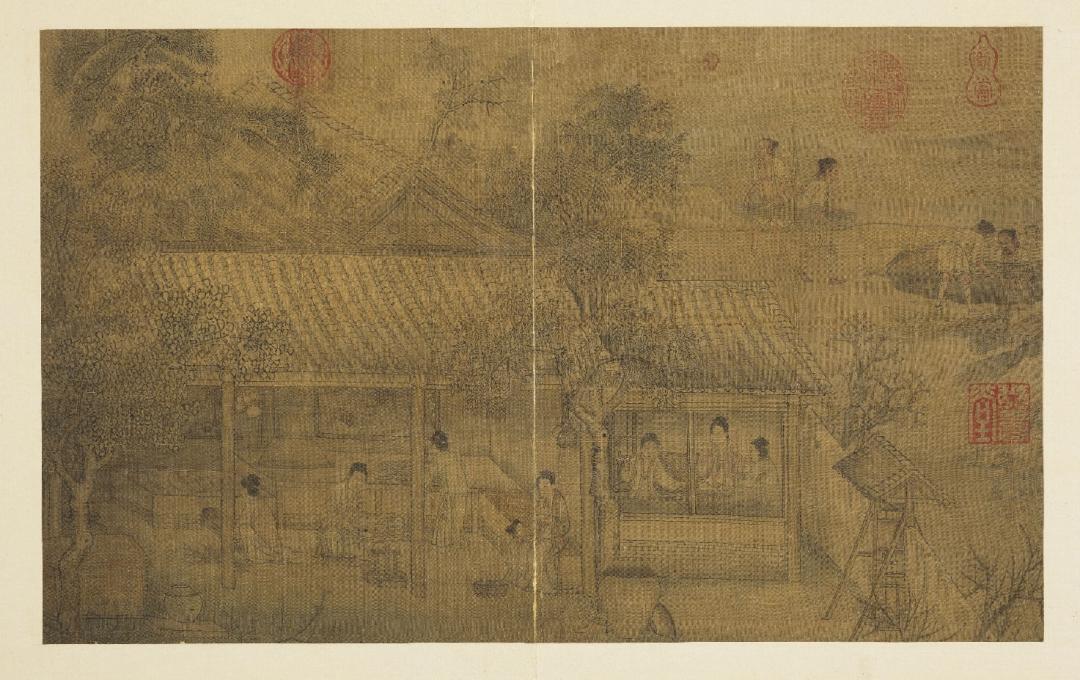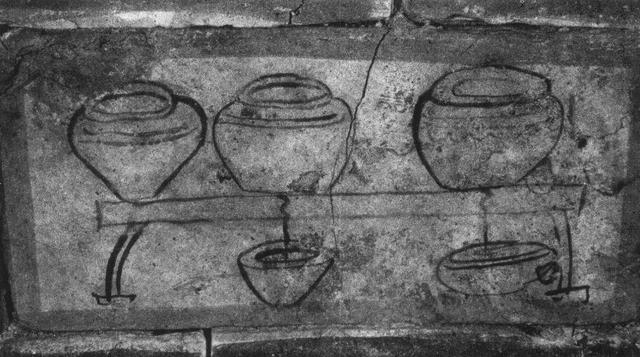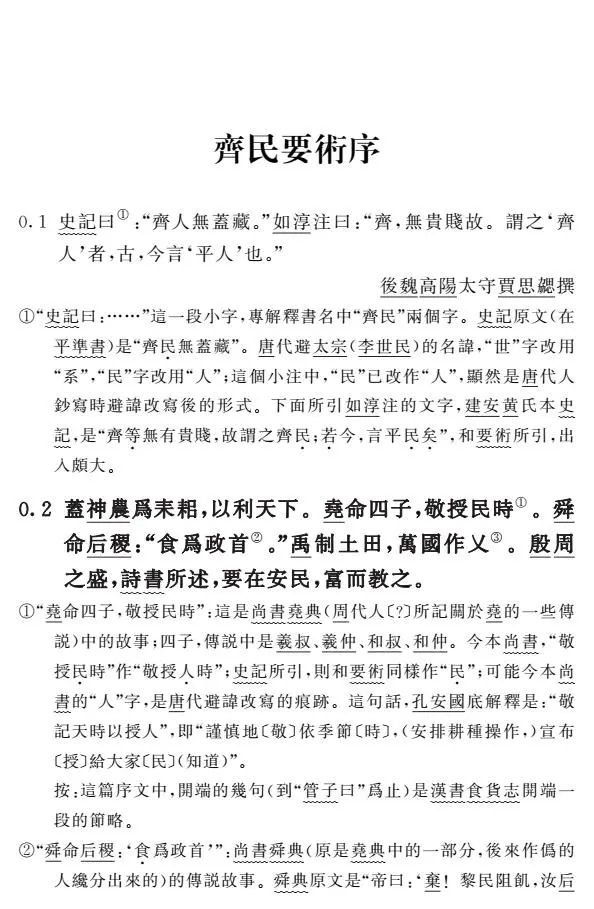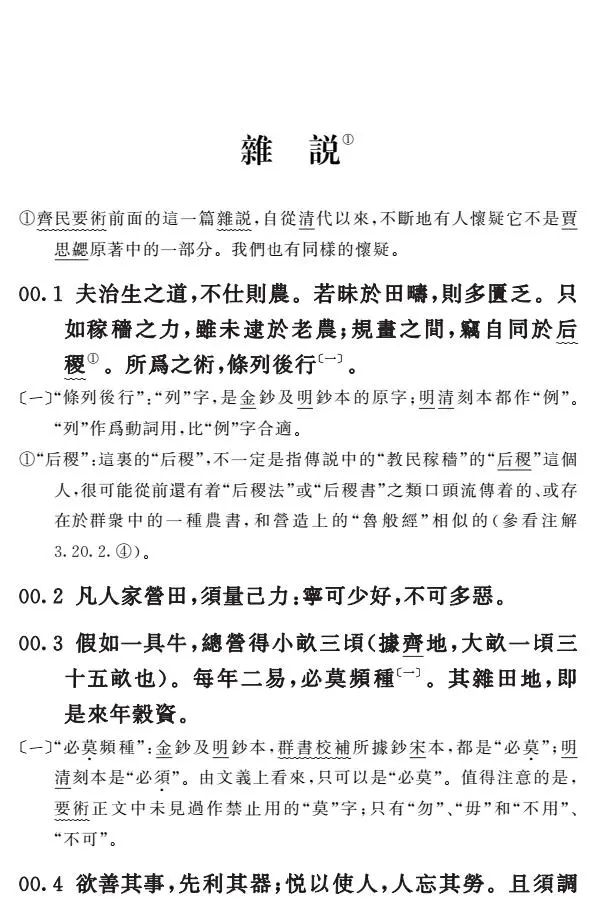Beginning of autumn, which has just passed, obviously failed to send away the arrogance and summer heat for several days. It has not slackened in the dog days, and it is still full of power. People can’t help feeling how people spent the seventh month of the lunar calendar in ancient times without air-conditioning fans. Today, we will take a look at how the ancients arranged their work through Qi Min Yao Shu, the earliest and most systematic ancient agricultural book.
"Qi Min Yao Shu Jin Shi", [Northern Wei Dynasty] Jia Sixie wrote a proofreading of Shi Shenghan.
Qi Min Yao Shu says that by July, wheat fields and rice fields no longer need to be cared for, and the main farming activities have come to an end, while the busyness between villages has just begun.
The first is to farm and raise silkworms. During the Wei, Jin, Southern and Northern Dynasties, there were many mountains and marshes waiting for land reclamation. People need to take advantage of the hot weather to remove weeds, dry them in the sun, and then set them on fire. Otherwise, it will be too late to do it when planting next spring.
In Yongjia County in the south (now Wenzhou, Zhejiang Province), there is a famous "eight generations of silkworms", which means that there are eight batches of silkworms that can be kept in a year. At the end of July, there was a kind of silk silkworm named "Hanzhen", which was beginning to spin silk and form cocoons, so we need to pay more attention to it.

[Song] Liu Songnian’s "Silkworm Things"
July is also a harvest month. At that time, there were many kinds of rice. There were as many as 24 kinds of northern rice recorded in Qi Min Yao Shu, and there were only 14 varieties of japonica rice. At this time, cicada-singing rice is ripe, and this kind of rice can also grow in the north. In Yu Xin’s poem, "cicada-singing rice in June, golden keel canal" refers to this kind of rice.
After harvesting rice, you should also worry about vegetables such as cucumbers, lettuce and radishes in the vegetable fields. If you have your own cattle and cars, you can cut them all down and transport them to the city for sale on the sixth and fourteenth day of July. These two dates are very strange, presumably because there is a "festival" the next day, and the city needs to consume more vegetables. On the seventh day of July, it is called "Melon and Fruit Festival". On this day, girls will offer melons and fruits to "Tiansun" (Weaver Girl) and "beg for cleverness". July 15th is the Mid-Autumn Festival, and the Buddhist "Bonsai" will be held on this day, and many vegetables will be needed for Buddhist purposes.
"Annotation of Agricultural Administration Encyclopedia", [Ming] Xu Guangqi wrote a supplement to Shi Shenghan’s annotation Shi Dingfang.
Some vegetables can be planted at the same time as they are sold. For example, the seeds are sown in early July, and three liters of seeds are sown on an acre, which can be eaten by a family for a long time. Even from summer to August, it can be planted. Those planted in early July are used to pickle pickles, and those planted after the summer heat can be used as dried vegetables.
After the mid-autumn, that is, not long after beginning of autumn, you can plant some winter sunflower. It would be better if mung beans were planted in the fields in June. In July, when you turn over the soil with a plow, the land will be as fat as the one with manure, and the effort of picking manure will be saved. In addition, there are garlic, onion, leek, coriander, alfalfa, mustard, canola, etc. for farmers to sow in July.
Xu Zhong’s Notes on Fan Sheng Zhi’s Book Today "The Grass in the South", by Shi Shenghan.
People who plant trees and flowers also have their deadlines in July. Although willows are often planted in spring, in June and July, they are planted with twigs from the spring of that year, and they grow as if they were growing at double speed.
Cypress trees can be cut for use all year round, but Qi Min Yao Shu tells us that other miscellaneous trees in the mountains will be infested with insects if they are not cut in April or July, so it was also a common sight to lift an axe into the mountains in July.
As for planting flowers, it’s not for adding romance to Chinese Valentine’s Day. Safflower can be used as dye and rouge. Qi Min Yao Shu also left a detailed record of rouge and lip fat, and said that the "late flower" planted in May, picked in July and half, has the most vivid color and is not easy to fade, which is better than that planted in spring.

Rouge in Qi Min Yao Shu
Bread is the staff of life. In addition to farming, July has become a good time to process non-staple food in a year because of the hot weather. For example, making koji is the best in July. Jia Sixie has collected many kinds of koji-making methods, such as Shenqu Millet Rice Wine Method, Sanhu Wheat Qu Method, Hedong Shenqu Method, Bailao Qu Method, Qinzhou Spring Wine Qu Method, and Millet Furnace Wine Method, among which the seventh day of July is a day worthy of attention.
On the fourth day of July, tidy up the music room, prepare the plaque and bracket properly, and adopt clean and good moxa.
On the sixth day of July, "lick the five grains", prepare grinding tools, and lick the five grains grinding tools.
On July 7th, we began to make distiller’s yeast.
Even vinegar is made on July 7th. There is a way to make vinegar from barley, which is very strict on time. It is required to be made on July 7. If you don’t have time to do it on that day, you should be prepared to collect it-take water on the seventh day and make it on the fifteenth. If you don’t make it in these two days, you won’t be able to make it in the rest of the day.

Mural "Vinegar Filter"
The eating habits of nomadic people, such as dairy products, are also recorded in Qi Min Yao Shu. For example, cheese is baked in the sun first, and after the milk skin is formed on the cheese, the floating surface is uncovered; Bake again, then uncover. When the oil runs out and no skin comes out, stop the fire and the cheese will be made.
Qi Min Yao Shu also reminds people to pay attention to the season when eating from the perspective of food hygiene. Such as silk, you can’t eat it until the end of July, September and October, because snails and worms are stuck on it at this time. The worm is so small that it is connected with the water shield that it is invisible to the naked eye.
Compilation and collation of convenient maps, edited by Shi Shenghan and Kang Chengyi by Kuang Kun [Ming].
There is a strange recipe for getting rid of diseases and disasters that attracts the most people’s attention-"On the seventh day of the first month, on the seventh day of July, men swallowed seven adzuki beans and women swallowed fourteen, but they were disease-free; Make the epidemic disease not infected. " On the seventh day of the first month and the seventh day of July, people have the custom of eating adzuki beans, which can keep them from getting sick all year round and keep the plague from spreading.
What activities do the scholars have? The answer is to print books. The seventh day of July is a good time to print books. As for why you choose this day to print books, and what matters need attention, Qi Min Yao Shu records it in great detail:
"Hot and humid in May, moth will be born, and those who don’t stretch their books in summer will be born with worms. After may 15 and before July 20, it must be relaxed and rolled up three times. When it needs to be sunny, it will be in a cool place under the big house, and the sun will not be seen. "
"Exposing books every day makes them colorful. Hot coil, the worm is very fast. Rain moistens the air, so it is especially necessary to avoid it. If you are cautious, it will take hundreds of years. "
It rains in midsummer, and the rustic steam is hot. If the book is not dried in the hot and humid summer, it is easy to give birth to moth. During the sixty-five days from May 15th to July 20th, books can be preserved for hundreds of years if they are spread out under a big house with cool wind and no direct sunlight. If the sun shines directly, the color of the book will darken; Roll up while it’s hot, and worms will grow even faster; In addition, we should avoid the humidity in rainy days. Therefore, it is a good choice to avoid the long plum rain and the rush of the field, and the seventh day of July is sunny.
Guang Ji at the age of [Song], edited by Chen Yuanliang and Xu Yimin.
In addition to drying books, all kinds of complete sets of lacquerware at home should be taken out and dried once in June and July, even if they are not used all summer. Such as lacquer paintings, lacquer boxes, lacquer pillows, etc., when it rains in the middle of July, it is wrapped around your fingers with cloth and wiped until it is fully heated, so that the glue will not move and become easy, and the utensils are naturally bright, clean and durable.
By the end of July, the above work will be finished one after another. During the period from the summer to the autumnal equinox, you can consider washing old clothes and adding new clothes to prepare for the arrival of late autumn.

[Northern Song Dynasty] Zhao Ji’s "Imitating Zhang Xuan’s Dao Lian Tu" (partial)
From weeding and sericulture to food processing, and then to the production of pigments, we can see that Tian Jia really has little leisure time and his work schedule is full. This book covers a wide range, from the cultivation methods of cereals, vegetables, fruit trees, trees and special crops, to the life experiences of dyeing and weaving, animal husbandry, brewing, cooking, diet, pen and ink, and so on. It is worthy of being an encyclopedia of life in ancient China agricultural society.
An encyclopedia of life in ancient China agricultural society, carefully translated and annotated by authoritative experts.
Click Book Shadow to enter JD.COM to buy a book.
Modern Interpretation of Qi Min Yao Shu (China’s classic translation series)
[Northern Wei Dynasty] A Textual Research on Shi Shenghan Written by Jia Sixie
Traditional horizontal arrangement
32 open paperback
brief Introduction of the content
Qi Min Yao Shu, written by Jia Sixie in the Northern Wei Dynasty in the 6th century A.D., is the earliest and most complete comprehensive and systematic agricultural encyclopedia in China, including agriculture, forestry, animal husbandry, sideline production and fishery, and also the earliest and most systematic agricultural masterpiece in the world. The book is rich in content, covering a wide range, including cultivation techniques of grain crops, vegetables, fruit trees and trees, processing, storage, brewing and cooking of agricultural and sideline products, as well as descriptions of cash crops and foreign products, which reflects the agricultural scientific knowledge accumulated by working people in China before the sixth century and is also a treasure house of life knowledge of the ancients.
Qi Min Yao Shu Jin Shi is the first relatively complete annotated version of this book, which was compiled by Professor Shi Shenghan, a famous agronomist, and became famous at home and abroad after its publication. This book has done a lot of collating work on the text, checking and proofreading Ming manuscripts, gold notes and several Ming and Qing engravings, punctuating and segmenting, and making detailed comments and translations, so that this ancient book, which is difficult to read in ancient Austria, can be read. This reprint, on the basis of the original, corrects some editing and proofreading mistakes to contribute to the readers.
Brief introduction of the author
Jia Sixie, an outstanding agronomist in ancient China, was a native of Qingzhou (now Shandong) in the Northern Wei Dynasty. He was once the satrap of Levin. In the late Northern Wei Dynasty, he wrote a masterpiece of agricultural science and technology, Qi Min Yao Shu, which is the earliest and most complete comprehensive systematic agronomy encyclopedia in China, including agriculture, forestry, animal husbandry, sideline production and fishery, and also the earliest and most systematic agronomy masterpiece in the world.
Shi Shenghan (1907-1971), a native of Xiangtan, Hunan Province, is a professor at Northwest Agricultural College, an agricultural historian, an agricultural educator and an expert in plant physiology. In his later years, he devoted himself to sorting out and studying China’s ancient agricultural scientific heritage, and successively completed more than ten kinds of works, such as Qi Min Yao Shu Jin Shi and Nong Zheng Quan Shu Jiao Annotation. He was one of the important founders of agricultural history in China.
Inside page appreciation



Original title: "How does an agricultural masterpiece guide our basic necessities?"
Read the original text